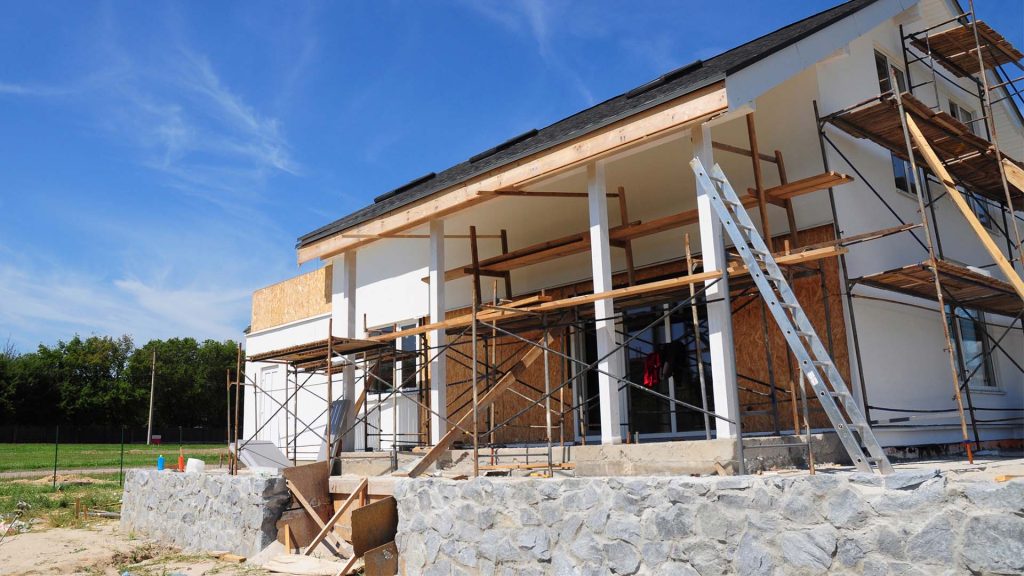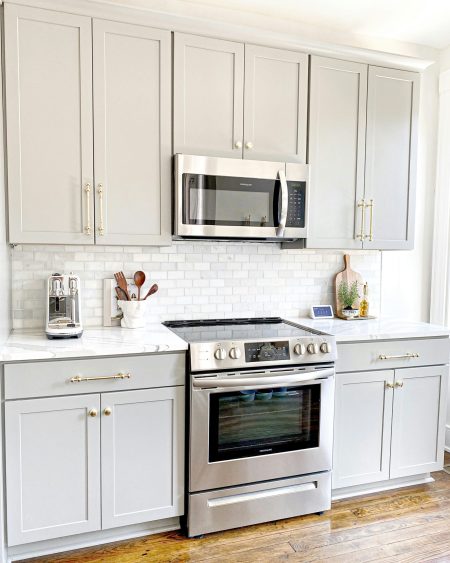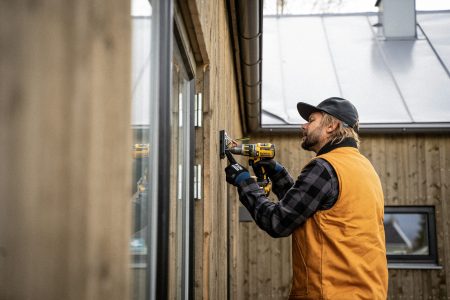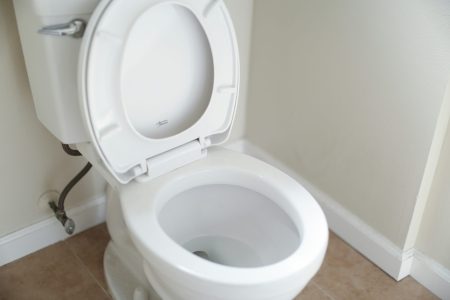Is it time to renovate?
Do you own a home that could benefit from some overdue upgrades?
Investing in one or more home improvement projects – such as a kitchen reno, bathroom facelift, room expansion, basement conversion, or garage rebuild – can make your home more functional, comfortable, and valuable.
But before pulling the trigger on any of these endeavors, spend some time researching the likely expenses involved and the cost of renovating a house.
In this article (Skip to…)
Why estimating home renovation costs is important
Understanding and estimating remodel costs is crucial to prevent financial stress, set realistic, and avoid project delays or cancellations, according to Shri Ganeshram, CEO of Awning.com.
“Accurate budgeting also helps homeowners make informed decisions about project scope and materials,” says Ganeshram.
Remember that home improvement projects often turn out to be more expensive than planned, and there can be major trade-offs involved.
“A renovation project will likely require financing of some kind, so it’s important to make sure you can afford to take on the debt involved,” says Martin Orefice, CEO of Rent To Own Labs. “You’ll also need to decide if it’s better to go with a more affordable renovation that might need to be updated again sooner or a more expensive remodel that can last longer.”
Factors that impact the cost of a renovation
Several factors can significantly affect what you will pay for a renovation project. Per Danna Rabin, CEO of Networx, they include:
- The project’s scope. “The larger and more complex the project is, the higher the cost,” Rabin said.
- Materials used. Higher-end materials and supplies, like exotic woods, custom cabinets, or imported tiles, will usually cost more than standard goods.
- Labor costs. This expense can fluctuate significantly depending on the project’s complexity and the skill of the professionals hired.
- Where your home is located can affect the final price, as material and labor expenses can vary significantly between cities and regions.
- Permits and fees required by your municipality.
- Structural modifications. “Renovation jobs that necessitate structural changes – such as removing load-bearing walls or adding support – can seriously increase your cost,” adds Rabin.
- If you have an accelerated deadline, your labor and material prices may go up; longer timelines, on the other hand, could result in additional expenses like temporary housing costs.
Additionally, hidden problems or deficiencies, such as a pipe leak that isn’t discovered until you remove a wall or insufficient electrical outlets within the room you want to remodel, can jack up your expenses, too.
Ultimately, square footage is perhaps the single biggest factor that will determine your cost.
“The more space you are renovating, the more you will spend, as there is an average cost per square foot for every remodeling project,” cautions Orefice. “Also, the more different contractors you need, the more you will need to spend, as plumbers, electricians, tiling experts, drywallers, and other skilled trades can get pricey.”
Ballpark estimates for common renovation projects
How much does it cost to renovate a house?
That depends on the room or area being remodeled as well as many of the factors explored above. But here’s a quick breakdown of what you will likely pay, on average, for various home improvement projects, according to HomeAdvisor:
- Kitchen remodel: The average kitchen redo will set you back $26,264, or approximately $150 per square foot. Common kitchen renovation prices span anywhere from $14,603 to $40,615, with major new kitchens carrying a price tag of about $70,000 to $130,000 and up versus $10,000 to $15,000 for a minor kitchen remodel.
- Bathroom renovation: Typically, a bathroom remodel today will cost $11,422, or around $125 per square foot; most prices average between $6,621 and $16,800, depending on the project scope and materials chosen. Major redos can add up to $28,000 or more.
- Room/home addition (such as a bump-out, converting an attic, adding a room, or building a balcony): Anticipate paying $49,847, on average, for a home addition, with prices varying between $22,340 and $81,236. Many additions will run approximately $80 to $200 per square foot, including labor and materials.
- Living room remodel: Count on forking over anywhere from $1,500 to $20,000, with an average spend of $8,000.
- Basement renovation: $12,073 to $33,379 is the average price range to remodel a basement, which equates to $30 to $75 per square foot.
- Window replacements: Swapping out your old windows for new ones can cost between $300 to $2,100 per window, with the average cost clocking in at $850.
- Whole house redo: Renovating your entire house will cost about $47,000, on average.
- Other projects: Expect to pay, on average, $17,238 to build a patio enclosure; $13,000 to renovate a garage; and $2,056 to build a closet.
Best home renovations for adding value to your home
The money you put into a remodel project should have some pay off when it’s time to sell your home. But your expected return on investment will vary depending on the renovation. According to Remodeling Magazine’s 2023 Cost Vs. Value Report, here is what you can anticipate recouping for each project:
- Garage door replacement: Expect to recoup 102.7% of your costs, on average
- Minor kitchen remodel – midrange: 85.7%
- Window replacement – vinyl: 68.5%
- Bath remodel – midrange: 66.7%
- Roofing replacement – asphalt shingles: 61.1%
- Major kitchen remodel – midrange: 41.8%
- Deck addition – composite: 39.8%
- Bathroom addition – midrange: 30.2%
- Primary suite addition – midrange: 30.0%
“When considering which projects to undertake, it’s good to know which ones add the most value to your home,” says Joy Aumann, a realtor with Luxury SoCal Realty. “Kitchen and bathroom remodels are often the superheroes of home renovations – they swoop in and save the day with a high return on investment. On the other hand, luxury upgrades, swimming pools, or unconventional designs might not offer a high return on investment and could scare off potential buyers.”
Tips for budgeting and saving for a renovation
It’s crucial to create a renovation budget prior to committing to a home improvement project. Also, explore the costs of materials, labor, and any required permits or fees involved.
“Research costs carefully, prioritize needs and wants, and set aside a contingency fund of up to 10%-20% of the project cost,” recommends Ganeshram. “In addition, consider the long-term benefits and return on investment of proposed improvements, and obtain quotes from multiple contractors.”
Hiring a skilled and reputable contractor can save you money in the long run by avoiding costly mistakes or shoddy work that may need to be fixed later, per Rabin.
Don’t just take your chosen contractor’s word for it: Price around for materials yourself to better understand what you’ll pay and where you can save. To find the best deals on materials and supplies, compare prices at several different brick-and-mortar and online retailers. You can further save cash by purchasing in bulk or choosing recycled or refurbished materials.
“Look for a contractor who is licensed, insured, and has positive reviews from past clients,” Rabin advises. “If you have the skills and time, consider doing some of the work yourself to save even more. This can include painting and installing flooring. Just be sure to only take on projects you are comfortable with, and leave the more complex work to professionals.”
Ways to pay for a home renovation
To fund your home improvement project, explore these different options:
Cash-out refinance
By choosing a cash-out refinance, you essentially replace your current home loan with a brand-new mortgage. The new loan amount will exceed your previous balance, and you will receive the difference as cash (minus any closing costs).
Cash-out refinancing options usually permit conforming and FHA loans to lend up to 80% of your home’s value, while VA loans can provide up to 100% of your equity. However, cash-out refinancing is not allowed with USDA loans.
Home equity loan
A home equity loan provides you with a second mortgage, which does not replace your current one. Upon closing, you will receive a lump sum amount, which you can repay in equal installments throughout the loan’s duration or “term.”
Typically, these loans come with fixed interest rates that remain the same throughout the repayment period. While the interest rates on home equity loans are generally higher than those of cash-out refinancing, your closing costs should be significantly lower.
Home equity line of credit
A home equity line of credit, or HELOC, is a second mortgage that operates similarly to a credit card. You can borrow funds from the available credit line, repay it, and borrow again up to your credit limit. Additionally, you only pay interest on the amount of money you have borrowed.
Following the “draw period” (when you can borrow from the HELOC), you enter a “repayment period” (where you cannot borrow any more funds and must repay the balance you owe). This feature could be particularly beneficial if you have a longer renovation project or several projects to complete over an extended period.
You can borrow funds as required, and you won’t pay interest on any money you’re not actively using. However, HELOCs can be complicated, so it’s crucial to learn about their pros and cons and weigh all of your options before applying.
Personal loan
If your home equity isn’t enough to cover your financing needs, a personal loan is an alternative option for funding home improvements. Because personal loans are unsecured, you don’t need to use your home as collateral.
This means that personal loans can be obtained much faster than HELOCs or home equity lines of credit, sometimes even on the next business day or with same-day funding. While personal loans may have adjustable or fixed rates, these rates are usually higher than those for home equity loans or HELOCs.
However, if you have good or excellent credit, you can still receive a competitive rate. The repayment period for personal loans is less flexible, generally lasting from two to five years. You’ll also have to pay closing costs for the loan.
Credit cards
Another option for financing your home improvement project is using credit cards. This is the easiest and most straightforward financing option since you don’t need to fill out a loan application. However, since home improvements can be quite expensive, you will need to be approved for a higher credit limit, or you may need to use multiple credit cards.
Additionally, credit cards typically have higher interest rates compared to home improvement loans. If you have no other choice but to use a credit card for your renovations, consider applying for a card with an introductory 0% annual percentage rate (APR). Some cards offer up to 18 months to pay back the balance at the introductory rate. However, this strategy is only worthwhile if you can pay off your debt during the repayment period.
The bottom line
Take the time to think through your home renovation project thoroughly before taking the plunge.
Remember that remodeling jobs can cost a lot more than you expect, so research materials, labor, and associated costs carefully, set a realistic budget, and shop around among several different contractors to find the right experience professional.
FAQs
Is it cheaper to remodel or build a new house?
It’s usually a lot less expensive to renovate your home than to rebuild it entirely or buy a newly constructed comparable house. But remodeling your existing home may not address all of your issues or fulfill all of your needs or wants; new construction, even if it is more costly, can provide greater customization and energy efficiency, for example.
Is remodeling a home worth it?
Renovating areas of your home can be worth it if the end result improves your quality of life, comfort, and safety, addresses changing needs, and provides a reasonable return on investment. Remodeling is almost always less costly than building a new home, and renovating can have less of an environmental impact than new construction.
What is the average cost per square foot to remodel a house?
According to HomeAdvisor, you’ll likely pay between $10 to $60 per square foot to remodel your home, although the price can escalate to $150 or more per square foot if you pick upscale materials and high-end appliances and products.
What home renovation has the biggest return?
Experts often say kitchen and bathroom remodels yield the highest return on investment, but that will depend on your location, what you actually paid for the renovation, buyer interest, and other factors. For more details, view the 2022 Cost Vs. Value Report by Remodeling magazine, which ranks remodel projects by costs recouped.
Read the full article here









